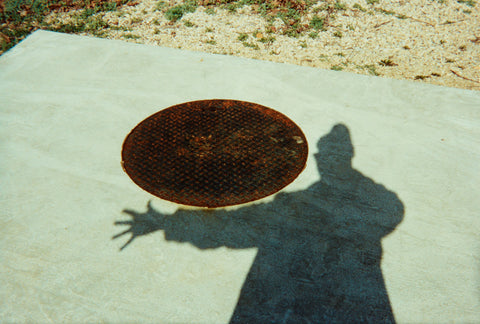
Still from A Couch in New York (1996), dir. by Chantal Akerman
‘Listen to others, even the dull and the ignorant. They too have their story.’
– Desiderata
A Couch in New York (1996), Chantal Akerman’s brilliant cinematic flop, tells the story of a ‘good’ and a ‘bad’ psychoanalyst. Henry, played by William Hurt, lives in a fancy New York apartment, paid for by his career as an urbane, book-writing shrink. In spite of his success, he’s bored with his life as the paid ear to a series of entitled, suit-wearing men. Desperate for temporary respite from his unlikeable patients, he responds to an advertisement for a house-swap in Paris. He lands in the bohemian dive of Béatrice (Juliette Binoche) and, more importantly, she is transported to Manhattan, where Henry’s patients – all of whom seem to have suppressed the idea that an analyst can take a holiday – keep turning up for sessions. The patients go on talking to Béatrice, deciding she must be Henry’s holiday cover. As it turns out, she has a propensity for dealing with grumpy men (indeed Henry has to deal with parallel incursions from her stroppy boyfriends) and takes a great interest in the details of their misery, often chipping in with examples and observations from her own life.
Happily, Béatrice has a friend in New York who gives her a crash course in how to be a proper psychoanalyst: repeat everything they say back in a deadpan voice and never give in to the transference. Béatrice somehow puts this together with her irrepressible inclination to have a really good chat. She lurches, seemingly uncontrollably, between a parody of semi-robotic standard practice and outlandishly heartfelt responsiveness. The patients love it. They all agree she’s much better at it than Henry. Even Henry, who disguises himself as a patient in order to work out what she’s up to, finds himself able to access lost memories and feelings in her presence. Needless to say, they fall in love (which is, of course, strictly not allowed according to the rules of the helpful friend).
While it might be unwise to use a fictional example to prove a point, the film argues for a kind of inspired listening that may embolden therapists who want to avoid the caricature of the well-trained, well-regulated therapeutic automaton. Wilfred Bion’s famous recommendation to listen ‘without memory or desire’ is all very well, but isn’t that exactly what machines are so good at? The film’s suggestion that it’s a person’s defects and idiosyncrasies that make them capable of effective or affecting listening makes perfect, poetic sense.
•
We can find a real-world example of the kind of listening that might actually make a difference in Claudia Rankine’s Just Us: An American Conversation (2020). In this collection of essays and poems, the author gives accounts of conversations and experiences she’s had with White friends and strangers where the subject of race has disrupted the course of a previously harmonious interaction. In the middle of an otherwise enjoyable chat, a man on an aeroplane suddenly announces, ‘I don’t see colour’, in spite of the fact that he’s just told her he has been working on diversity in his job. Rankine recounts: ‘The phrase “I don’t see colour” pulled an emergency brake in my brain’. The fact that she can see – and feel – the problem, while he apparently can’t, immediately threatens to drive a wedge between them. Still, they’re stuck together on a flight so there’s little opportunity to walk away. In a moment of startling quick-wittedness, Rankine responds by paraphrasing of Sojourner Truth: ‘Ain’t I a black woman?’ she asks. He is quick to grasp what she’s saying and asks what other idiotic things he’s said so far. From here they begin a correspondence that includes her showing him the article she wrote about their interaction, and his response to the article, which in turn causes her to think further about her own acceptance of his privileged account of race.
In another example, Rankine and a White friend go to see Fairview by Jackie Sibblies Drury – a play which culminates in a Black actor requesting that the White members of the audience get up onto the stage. The friend doesn’t move, and Rankine describes feeling betrayed. For weeks they don’t speak. Again, Rankine writes about the experience and shows the piece to her friend, after which she receives a pained email in which the friend affirms Rankine’s description of what happened, before going on to describe her own confusion about White people’s moral masochism and the idea that we can somehow pay off our guilt by owning it publicly. Rankine generously accepts the friend’s position. The story is as much about Rankine’s own shift from incomprehension to cautious acceptance as it is about the friend’s perplexing inertia. And, like the first story, it clearly shows how people may be positioned to hear things completely differently and can gain a great deal from having their own listening both supplemented and destabilised by the listening of another.
Rather like Ferenczi, Rankine asks herself whether to remain silent or whether to challenge. Here we see two instances where the challenge went well. Like a good analyst, she enables people to hear themselves differently. But more than that, she allows their responses to open up further questions for herself. Rather than remaining stuck in one position, or simply correcting other people’s errors, she suggests it may be perfectly possible for people to affect each other, to hear and alter each other, without it being a catastrophe.
Excerpted from Uneasy Listening: Notes on Hearing and Being Heard (2022) by Anouchka Grose and Robert Brewer Young
Paperback with flap
12.5 x 19.5cm, 96 pages
€15.50 £12 $18






